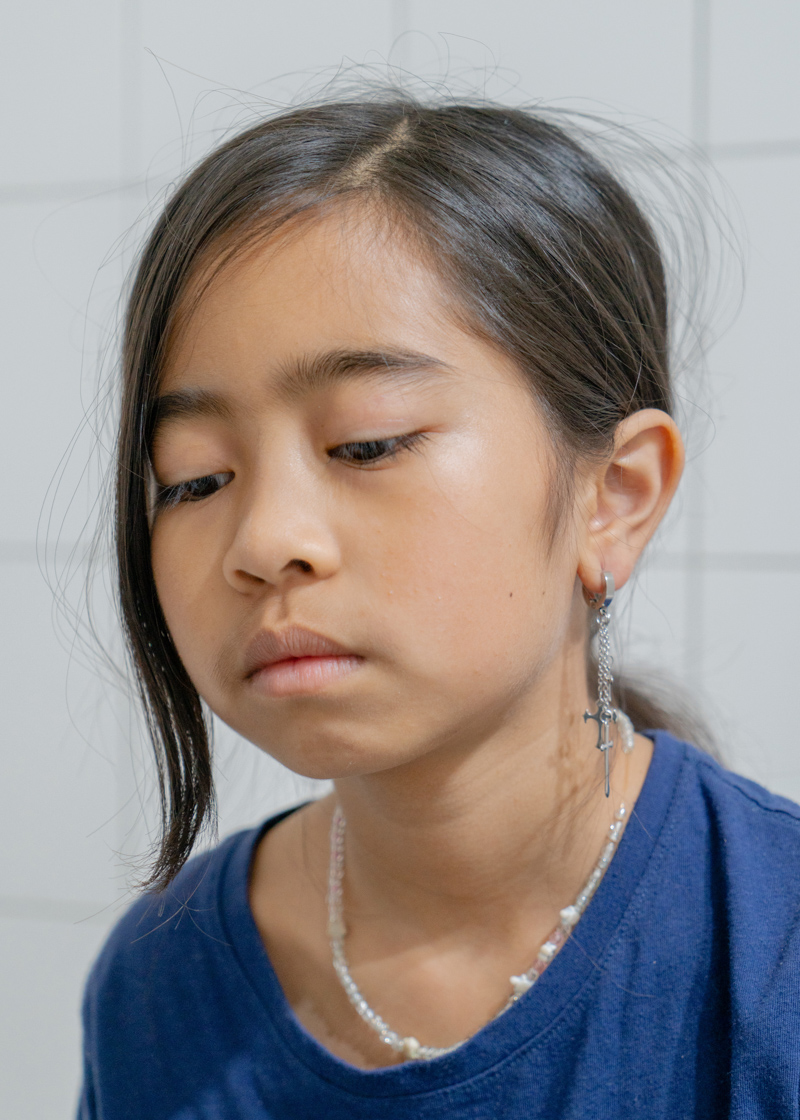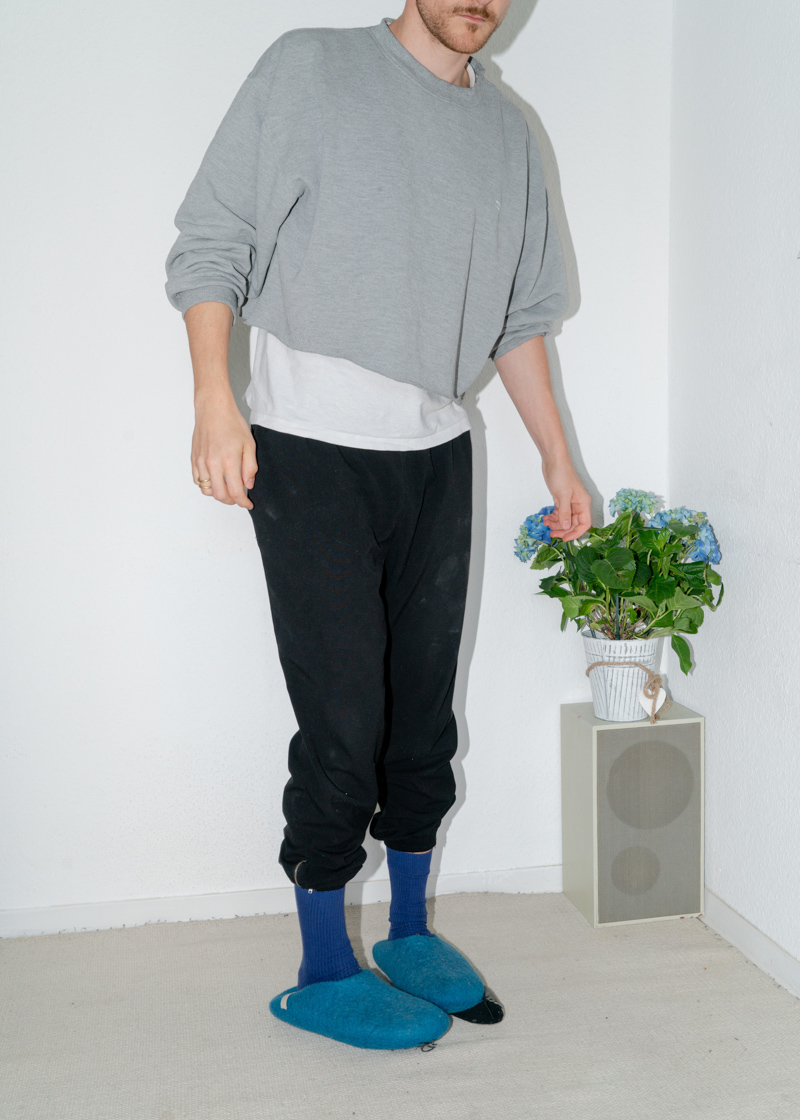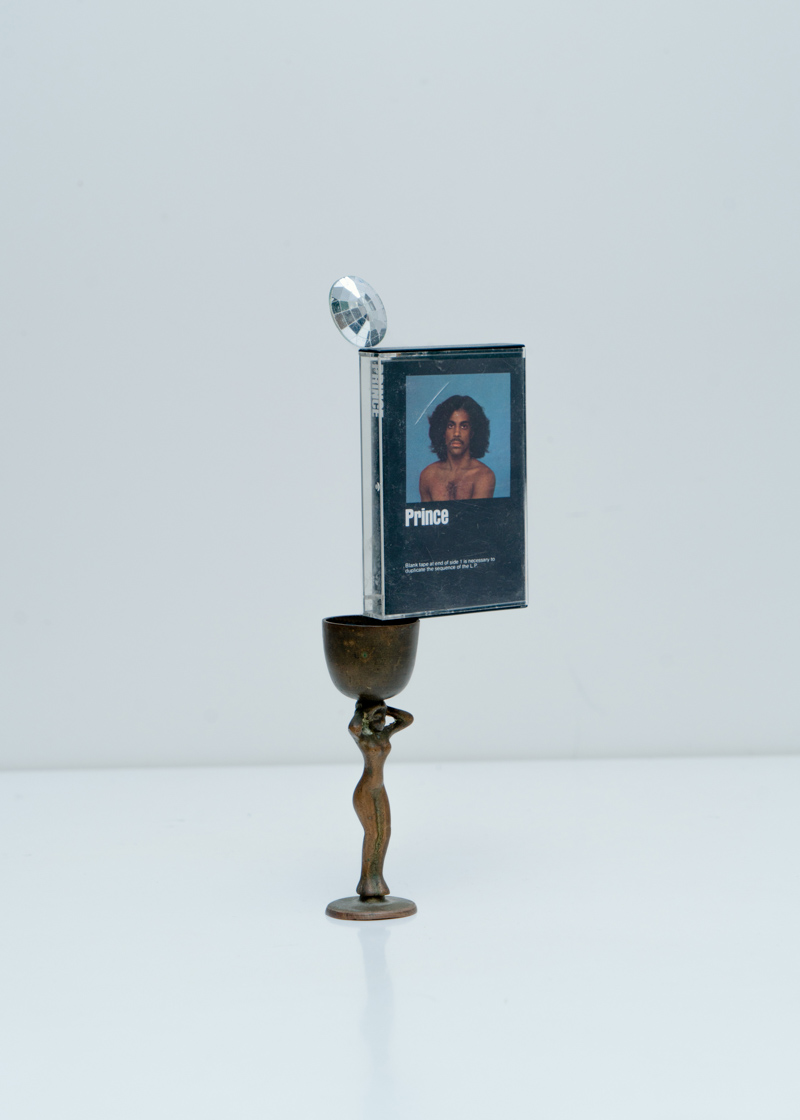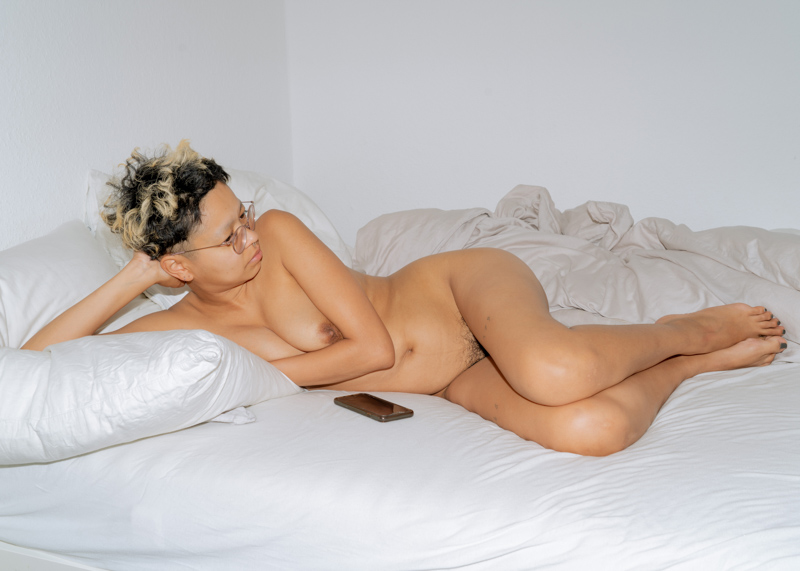Moritz Jekat studied Visual Communication at university of applied sciences Potsdam from 2012 till 2018. He focused on photography and graduated with his photography work and book “Non ya” mid July 2018. He is currently residing in Berlin.



Non ya – None of your business!
A photo work about a contemporary, multinational family.
We are living in a world which is more accessible and open than ever before. This offers us many different ways of living in all types of social constructs, especially when living in a first world country like Germany.
In my photo work and book “Non ya,” I am looking at one of the oldest social constructs that constantly evolves: Family.
How can such a construct of living together be interpreted and look now in today’s western society? I researched about family in an autobiographic, photographic attempt; I started a new family in Berlin, Germany last year. Together with my African-American–Japanese partner (born in the USA, raised in Japan) and her 10 year old daughter, (born in Japan, raised in the USA) and I (German citizen), we moved in together about a year ago. We met two years ago in Los Angeles in the United States.
What does it mean if you decide to live your life and love across international borders and different cultures, but want to be together in one place, and in one family?
How do our cultural heritages influence this way of living, and what does multi-nationality mean in a practical way? How does immigration impact you, and your life as a family?
“Non ya” focuses on seeing the possibility and privilege of living together in a multinational family as an opportunity specific to our contemporary world. We all are bringing our different heritages into this new relationship: our memories, ideas, culture, ways of thinking, feelings and expectations and many more. A mixture of portraits and objects from our daily life telling us that story. Some of these objects are evidence of our family life and our shared household. You need to prove many private insights to the authorities if you are migrating to a country. Not only proving it to the authorities, but sometimes also to yourself. Some other objects from our daily life are becoming sculptures and morphing into something new, just like our new family does. These objects are our memories, they are our ideas, they are our past, they are our future and our present. “Non ya” is an abstract photography attempt about the triangular relationship between my partner, my stepdaughter, their migration and our transformation as a multinational, social construct called family.


NH: How do the concepts of nationality and identity influence your photography?
MJ: Three very different individuals and identities came together about two years ago, which I now call my family. Regardless our age, we are all evolving identities. Finding myself in a parental role and family situation inspired me to start this project. I never produced such a personal piece of work before. If I look at it now, I would say this extended the range of pictures I took. I was inspired to take more abstract photos, objects, installations and take different approaches for portraits.
I don’t think nationality equates identity. It’s a piece of paper that hands you privilege or takes it away. Taking the photographs for “Non ya” I didn’t want to think about nationality. I didn’t want to look at things in my family and think “ah ja, that’s American, that’s Japanese, that’s German.” I try to strip these associations and look at the person, the spaces, the things that they are surrounded by, and the things that they use, and I wanted to transport that feeling. Going through the immigration process for my partner and my stepdaughter influenced me as a person and us as a family, and thus had an impact on my photographs. Undergoing this bureaucratic process motivated me to take sometimes brutally honest pictures of our family life- similar to the many documents that we submitted during this process.
NH: Your work seems to be filled with both observed and contrived symbolism. How do you feel that inanimate objects relate to humans?
MJ: When I view objects in my home, I look at the person who uses it most. The object becomes a part of the user in this world. For example, when I look at my partner’s phone, the way she adjusted it relates to her. I see her when I look at it, but I also see our relationship.
The way I staged some of the objects relates to the relationship between me and my partner and my stepdaughter. Some other objects don’t necessarily relate to a single person, but to an emotional stage of life I was in.
As humans, with our social and cultural imprint, I feel that we choose, consciously or subconsciously, to use certain objects and adjust or transform them. I think that we also attract and collect objects that way and they become part of us.


NH: Though your project is personal, what would you hope it might communicate to society on a larger scale?
MJ: Social constructs are constantly changing on multiple scales. Even a seemingly old concept like “family” has been evolving since its inception. Many differences depend on which cultural background it originates from. Family is a pretty pluralistic concept all over the world, but most people, as different as we are and as different our idea of family is, can relate to it. My partner, my stepdaughter and I are able and allowed to live together even though we are from totally different parts of this world, and from different backgrounds of society and culture. We are lucky to enjoy this privilege- not everyone can. My hope is that this project communicates open borders, multi-nationalities, cultural diversion and pluralism as an opportunity for change, not as a threat.
NH: Non Ya allows strangers to get an intimate glimpse into the life of your family. How did you respond to this exposure after you published the work?
MJ: I love my new little family and our new life together. So, I love to share it. Since I could choose freely in regards to how I want to present it, there still leaves much room for interpretation by the observer. It didn’t feel like exposure. Even though I chose the title “Non ya,” which stands for “None of your business,” it’s “none of your business,” but please come and take a peek.
Of course, it also relates to the process of immigration where you are forced to share personal details with authorities and strangers who are going to judge you based on this information, which is drastically more unpleasant.



NH: What differences and similarities do you notice in your approaches to your personal projects and your commissioned work?
MJ: My personal work usually starts spontaneously. When I want to work on a certain topic, I just start taking pictures. The deeper concept usually grows naturally out of the work during the process, which usually takes time. I normally don’t have this luxury of time for my commissioned projects. These projects are planned through, and there is a concept from the beginning, which is also dictated by most clients. Regardless, during production, there is always time for spontaneous changes and decisions. Thus I see differences in the preparation of personal projects and commissioned work, but similarities in the actual act of photographing.
NH: What advice can you offer photographers that are interested in developing a project about their personal lives?
MJ: Every personal project is different. It helped me a to talk about it a lot and to research about the topics which are part of “Non ya.”





To view more of Moritz Jekat’s work please visit his website.